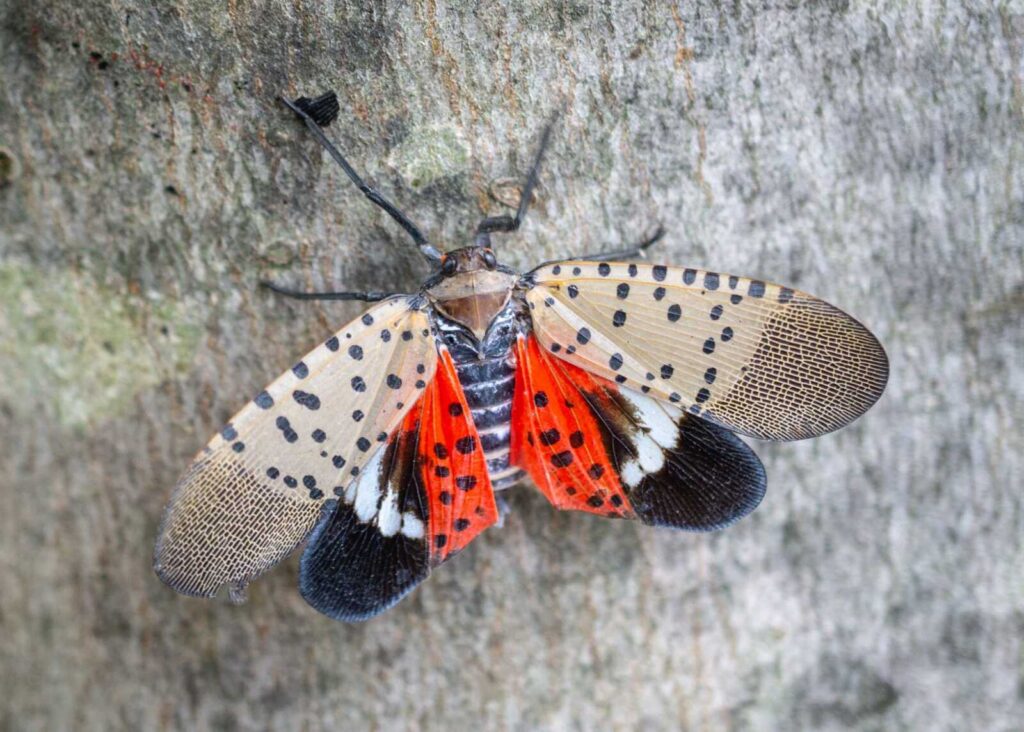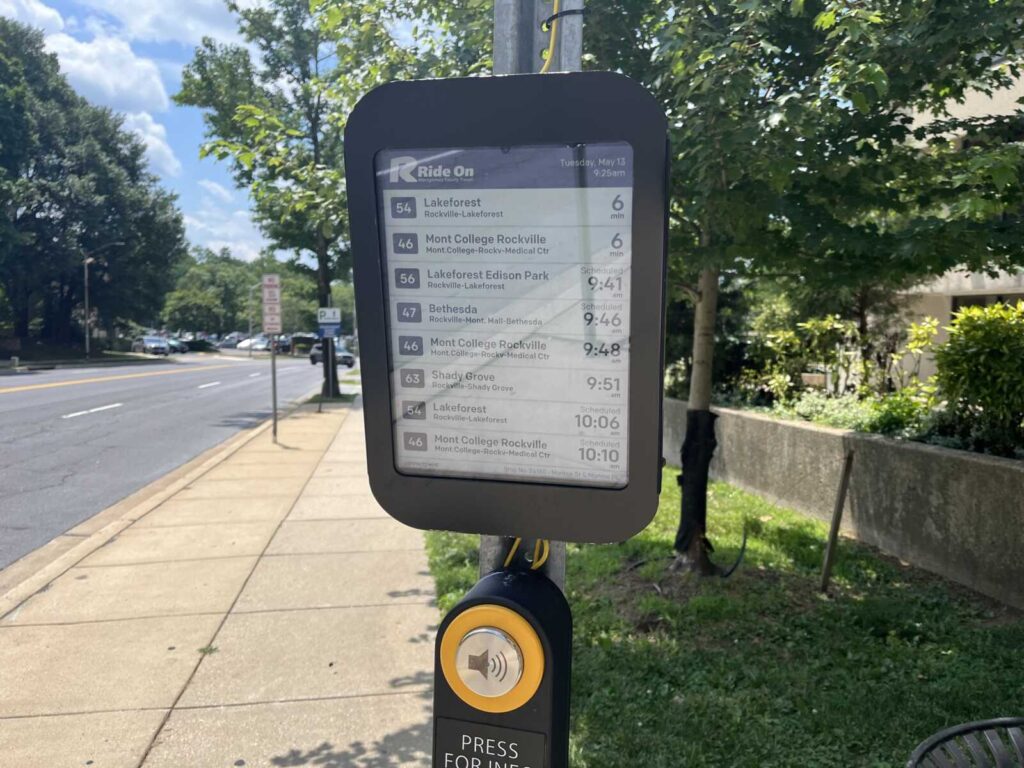Over the next three to five years, Montgomery County residents should anticipate a major increase in the spotted lanternfly population, with certain regions perhaps reaching levels comparable to the cicada breakout in 2021, according to a warning from the Montgomery County Department of Transportation (MCDOT).
Officials believe the invasive insects are not dangerous to people, pets, or most trees, despite the fact that they are a nuisance and feed on tree sap. They ask locals to help stop their spread by checking cars and destroying egg masses.
According to the Montgomery County Department of Transportation (MCDOT), citizens should brace themselves for a surge in the number of spotted lanternflies over the course of the next three to five years. The Southeast Asian invasive species was discovered in the United States for the first time in eastern Pennsylvania in September 2014, and it moved to Cecil County, Maryland, in October 2018. Since their initial discovery in Montgomery County in 2022, the insects’ numbers have increased.
According to MCDOT authorities, population numbers in some areas of the County might resemble those of the 2021 Cicada Brood X emergence.According to MCDOT Division of Highway Services Arborist and Entomologist Ashley Dykes, the situation will get worse the further northeast you go. We’re not quite at peak cicada season numbers yet, but we’re getting there in some sections of the County, especially in places like Damascus and Brookeville.
MCDOT officials, however, warn locals that while the insects are an annoyance, they are not dangerous.According to Dykes, they don’t bite or sting. Additionally, since they don’t contain any known poisons, pets who attempt to eat them shouldn’t be harmed.
Although spotted lanternflies consume tree sap, MCDOT officials believe there is little reason to worry about long-term harm.According to Dykes, the majority of trees are resilient enough to recover. They leave behind a material called honeydew while they feed, which causes a sticky mess and the growth of a black sooty mold. Parking autos next to Tree of Heaven plants or other hosts should be avoided by locals.
Spotted lanternflies favor trees of heaven, which are an invasive species, but eliminating them won’t help because they may eat a wide variety of plants. Tree of Heaven plants are not currently scheduled to be removed from County property by MCDOT.At this stage, the population is established, according to Dykes. It won’t help much to squash them. Examining your vehicles while entering and exiting areas where spotted lanternflies are present is the greatest method to stop the colony from growing. They enjoy hitching rides on cars.
Additionally, MCDOT advises locals to become knowledgeable about identifying and properly discarding spotted lanternfly egg masses. Residents should be alert since the insects begin laying their eggs in late summer and continue into early winter. The eggs of spotted lanternflies are laid in gray putty-covered columns. The columns can be found on trees, stones, or other flat surfaces and can be at least an inch and a half long. Before discarding, residents should break the egg masses after scraping them into a tight bag.
Before undergoing a final molt to reach their winged adult stage, spotted lanternflies go through four distinct stages of development. Fully grown winged adults of lanternflies have already been observed all throughout the County, although the majority are still crawling around in their last nymphal stage.MCDOT Director Chris Conklin stated, “We are aware that the existence of an invasive species can raise concerns for our residents.” We do not anticipate a significant detrimental effect on our native plants or species, despite the fact that it is a nuisance. By checking trees and other surfaces for egg masses and getting rid of them, we encourage our residents to contribute to stopping the population’s continued spread.
More than 250,000 trees in the designated county right-of-way and an additional 200,000 in rural areas are maintained by the Tree Maintenance branch of the MCDOT Highway Services Division. During Fiscal Year 2025, the Tree Maintenance Section planted 2,487 trees in County right-of-way, primarily along residential streets, and responded to 15,485 resident inquiries via MC 311. Online requests for street tree planting are accepted from locals. On the MCDOT Tree Maintenance Section website, residents can also request that one of seven MCDOT Arborists examine, trim, or even remove a diseased or dead county-maintained tree.
Visit the Maryland Department of Agriculture’s spotted lanternfly resource page to learn more about spotted lanternflies.
To learn more about MCDOT’s services and programsVisit Montgomery County’s website at MontgomeryCountyMd.gov/mcdot, subscribe to MCDOT’s Go Montgomery! newsletter, and follow @MCDOTNow on Facebook, Instagram, Bluesky, and X.











